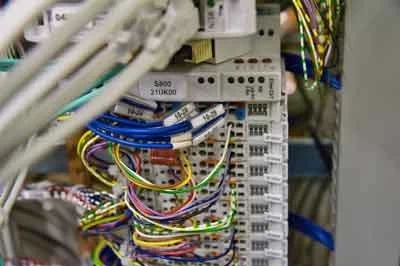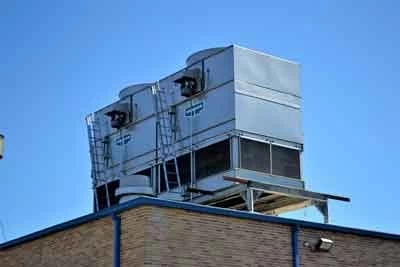Protecting HVAC Systems within a Building Automation Network

In modern buildings, the HVAC system is rarely an isolated entity. Building automation systems (BAS) integrate HVAC components with an array of sensors, controllers, and a central management platform — all connected through networks. This interconnectivity provides significant benefits in terms of optimization and control but also introduces crucial cybersecurity vulnerabilities demanding careful consideration.
HVAC Systems as Targets
While it might not be the primary objective of attackers, HVAC systems within a BAS network present attractive targets for several reasons:
Disruption of Operations: By manipulating HVAC settings, attackers can cause discomfort, potentially force a facility to shut down, or inflict damage to temperature-sensitive equipment.
Entry Point to the Network: Compromised HVAC components can serve as a beachhead to access other, more sensitive parts of a building's network.
Resource Drain (Botnets): Insufficiently secured HVAC devices can be hijacked and assimilated into botnets used for carrying out larger-scale attacks.
Common Vulnerabilities in HVAC Systems
Legacy Equipment: Older HVAC systems were often not designed with network security in mind, lacking basic authentication or encryption capabilities.
Poor Network Segmentation: Insufficient separation between the BAS network and the broader corporate IT network facilitates the lateral movement of attackers once inside.
Outdated Software and Firmware: Unpatched vulnerabilities in BAS software or the firmware of HVAC controllers create openings for exploitation.
Default Passwords: Using easily guessable or unchanged default credentials remains a widespread weakness, especially with some BAS and HVAC equipment.
Physical Access: Exposed network ports, control panels, or devices themselves can be targets for unauthorized on-site access.
Cybersecurity Best Practices for HVAC Systems
Implementing a robust cybersecurity strategy for the BAS network and its HVAC components requires a multi-faceted approach:
Network Segmentation: Create logical divisions between the BAS network, the corporate IT network, and the internet. Implement firewalls and strict access controls to limit the spread of an attack in case of a breach.
Secure Remote Access: If remote maintenance or management of the BAS is necessary, use encrypted VPNs and strong multi-factor authentication.
Vulnerability Scanning and Patch Management: Regularly scan the network for known vulnerabilities and apply software and firmware patches promptly across all devices and the core BAS platform.
Password Hygiene: Enforce complex password policies, eliminate default passwords, and promote regular password rotation.
Physical Security: Limit access to network rooms, controllers, and equipment, especially in publicly accessible parts of the building.
Incident Response Plan: Develop a detailed plan for identifying, containing, and addressing a cybersecurity breach, including communication protocols and data recovery procedures.
Staff Training: Educate all personnel involved in managing or interacting with the BAS about basic cybersecurity practices and their role in protecting the system.
Risk Mitigation Strategies
Zero-Trust Architecture Employ a zero-trust approach where no user, device, or network is automatically trusted. Implement continuous authentication and granular authorization checks.
Intrusion Detection and Prevention Systems (IDPS): Deploy network-based IDPS that can detect anomalous traffic patterns or malicious activity targeting HVAC components or the BAS.
Honeypots: Consider using "honeypot" systems that mimic vulnerable components as a means of early detection and to gather intelligence on threat actors.
The Evolving Cybersecurity Landscape
It's important to understand that cybersecurity is an ongoing, proactive process, not a one-time fix. Facility managers and IT professionals must keep informed of emerging threats, evolving best practices, and new technologies designed to safeguard automation networks. Regular risk assessments, third-party security audits, and continuous training can help create a robust security posture to defend your HVAC systems from cyberattacks.
Remember: In a connected world, a robust cybersecurity strategy is no longer optional – it's integral to the overall well-being and operation of any modern building.
By prioritizing cybersecurity in the design, implementation, and maintenance of your building automation system, you protect not only your HVAC components but also the broader safety, comfort, and operational efficiency of your facility.







